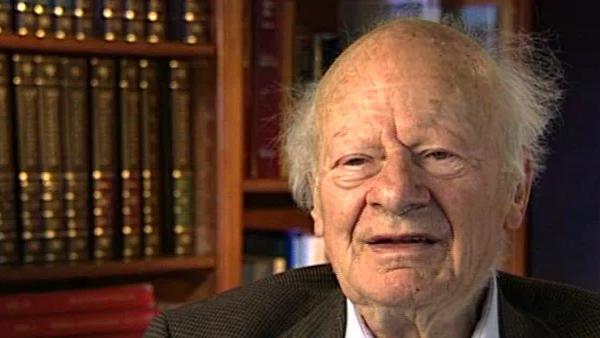NEXT STORY

Winning the Cressy-Morrison Prize
RELATED STORIES

NEXT STORY

Winning the Cressy-Morrison Prize
RELATED STORIES


|
Views | Duration | |
|---|---|---|---|
| 71. The temperature of the sun | 447 | 03:57 | |
| 72. Stellar composition and energy production | 388 | 03:01 | |
| 73. Work on the carbon/nitrogen cycle of massive stars | 414 | 02:46 | |
| 74. Winning the Cressy-Morrison Prize | 409 | 03:15 | |
| 75. Robert Marshak's work on white dwarfs | 358 | 03:04 | |
| 76. Edwin Salpeter's work in astrophysics | 345 | 02:51 | |
| 77. Work by Fred Hoyle and Edwin Salpeter | 408 | 04:30 | |
| 78. Winning the Nobel Prize | 1 | 772 | 01:26 |
| 79. The discovery of nuclear fission | 681 | 01:43 | |
| 80. Chain reactions and atomic bombs | 506 | 01:55 |


And so I went home from that conference and in the next several weeks I looked at other elements in the periodic table going just systematically to helium. Well, that wouldn't work, helium and hydrogen don't give you anything; helium and helium don't give you anything, because neither lithium-5 nor beryllium-8 are stable nuclei. So you had to go on and when you took lithium, beryllium, boron, they could give you a very big energy production together with hydrogen but they would then be totally exhausted immediately... until I came to carbon and carbon was totally different, namely when you start with carbon and add a hydrogen you get nitrogen-13 which disintegrates spontaneously into carbon-13. You can add another proton, make nitrogen-14, and then another proton making oxygen-15 and nitrogen-15, and finally when you have nitrogen-15 and add a proton, you don't get oxygen-16 as you might believe, but instead it disintegrates into carbon-12 and helium-4. And so you get your initial nucleus back, the carbon only acts as a... as a catalyst to bring four protons together to form a helium nucleus; from that you get all the energy release which is involved in that reaction, and you get it without having to invoke weak interactions like the proton-proton reaction. It is therefore generally accepted now that it is the proton-proton reaction for the sun, but it is the carbon cycle - carbon citrogen cycle - for all massive stars beginning a little below Sirius and going up all the way in the Stellar Table to the most luminous stars.
The late German-American physicist Hans Bethe once described himself as the H-bomb's midwife. He left Nazi Germany in 1933, after which he helped develop the first atomic bomb, won the Nobel Prize in Physics in 1967 for his contribution to the theory of nuclear reactions, advocated tighter controls over nuclear weapons and campaigned vigorously for the peaceful use of nuclear energy.
Title: Work on the carbon/nitrogen cycle of massive stars
Listeners: Sam Schweber
Silvan Sam Schweber is the Koret Professor of the History of Ideas and Professor of Physics at Brandeis University, and a Faculty Associate in the Department of the History of Science at Harvard University. He is the author of a history of the development of quantum electro mechanics, "QED and the men who made it", and has recently completed a biography of Hans Bethe and the history of nuclear weapons development, "In the Shadow of the Bomb: Oppenheimer, Bethe, and the Moral Responsibility of the Scientist" (Princeton University Press, 2000).
Tags: stars, carbon, nitrogen, reaction, proton, stellar table
Duration: 2 minutes, 47 seconds
Date story recorded: December 1996
Date story went live: 24 January 2008